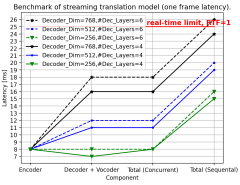Authors: Ilia V. Zalivako, Anastasiia S. Nikolaeva, Alexander S. Borisenko, Andrei E. Korolkov, Pavel L. Sidorov, Kristina P. Galstyan, Nikita V. Semenin, Vasilii N. Smirnov, Mikhail A. Aksenov, Konstantin M. Makushin, Evgeniy O. Kiktenko, Aleksey K. Fedorov, Ilya A. Semerikov, Ksenia Yu. Khabarova, Nikolay N. Kolachevsky
Published on: February 05, 2024
Impact Score: 8.15
Arxiv code: Arxiv:2402.03121
Summary
- What is new: Introduction of a quantum processor based on a 3D linear Paul trap with 8 ququarts, offering capabilities akin to a 16-qubit processor.
- Why this is important: The need for more scalable and efficient quantum processors to advance quantum computing.
- What the research proposes: Using a 3D linear Paul trap and $^{171}$Yb$^{+}$ ions to create a quantum processor with individually controllable ququarts.
- Results: Successful execution of quantum algorithms, benchmarking of single- and two-qubit operations, generation of a 5-particle entangled state, and molecular simulations.
Technical Details
Technological frameworks used: 3D linear Paul trap for quantum processing.
Models used: Ququarts based on $^{171}$Yb$^{+}$ ions, E2 optical transition at 435nm for qudit encoding.
Data used: Quantum algorithms, including Bernstein-Vazirani and Grover’s search algorithms, and molecular simulations of H$_2$ and LiH.
Potential Impact
Quantum computing, pharmaceuticals through molecular simulations, cybersecurity with advanced algorithms.
Want to implement this idea in a business?
We have generated a startup concept here: QudraQuant.




Leave a Reply